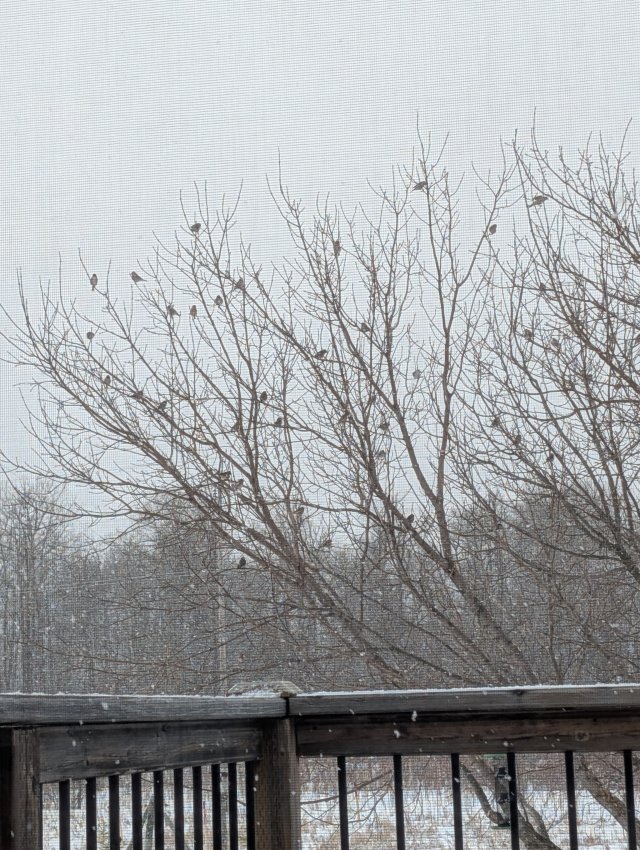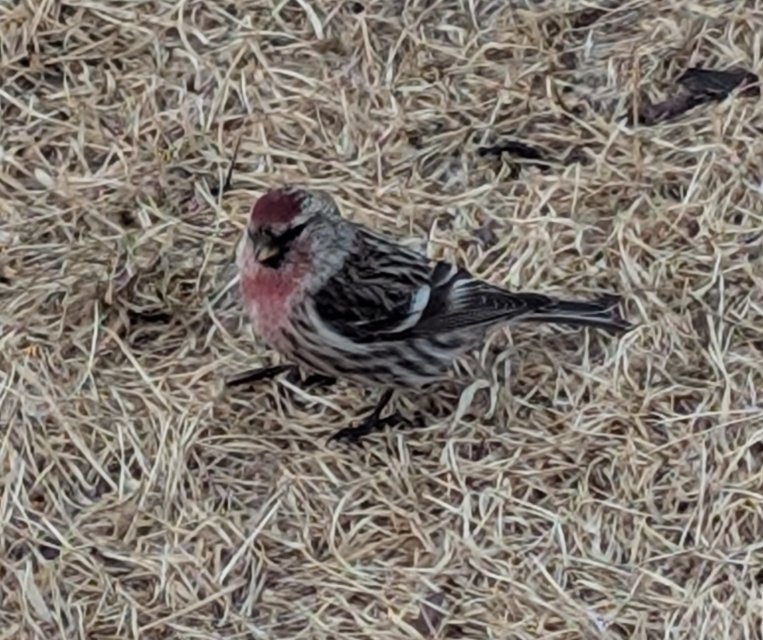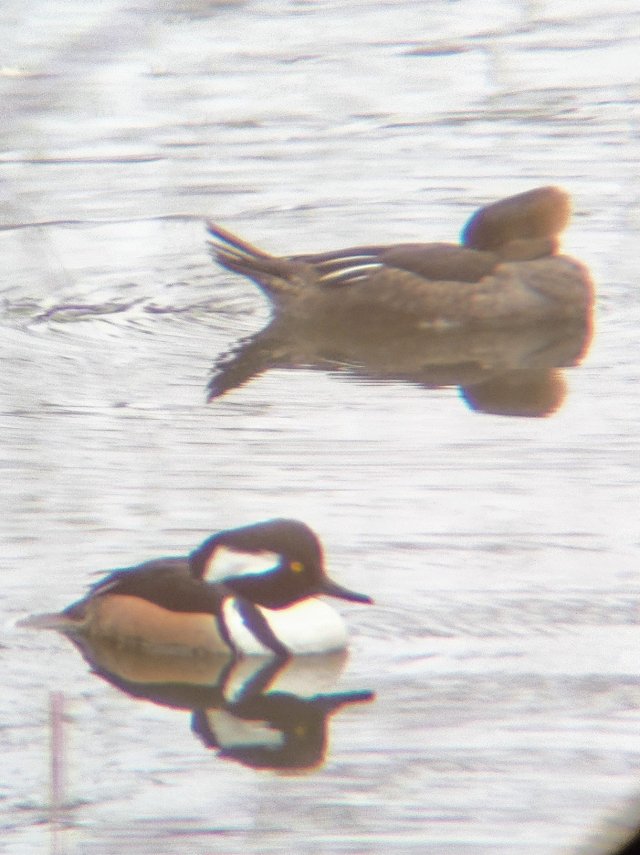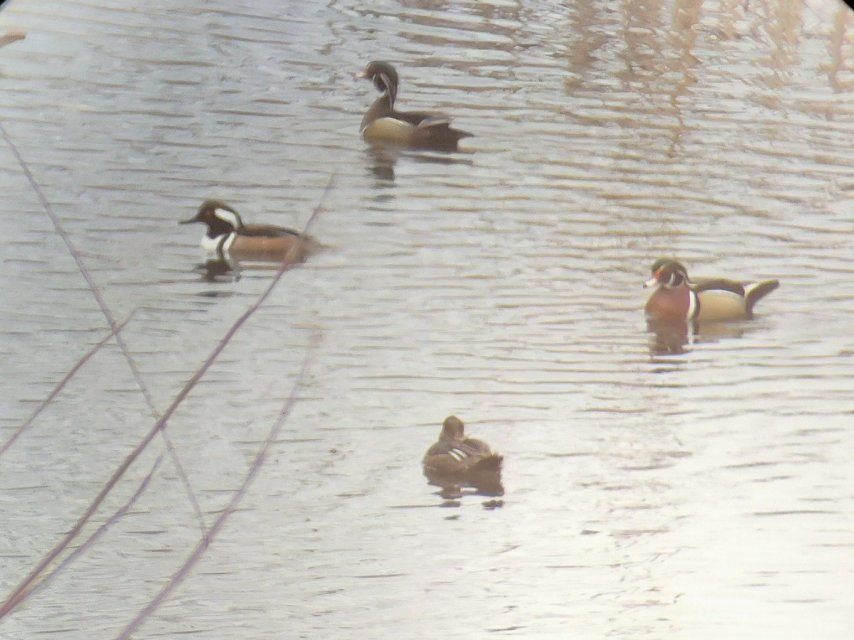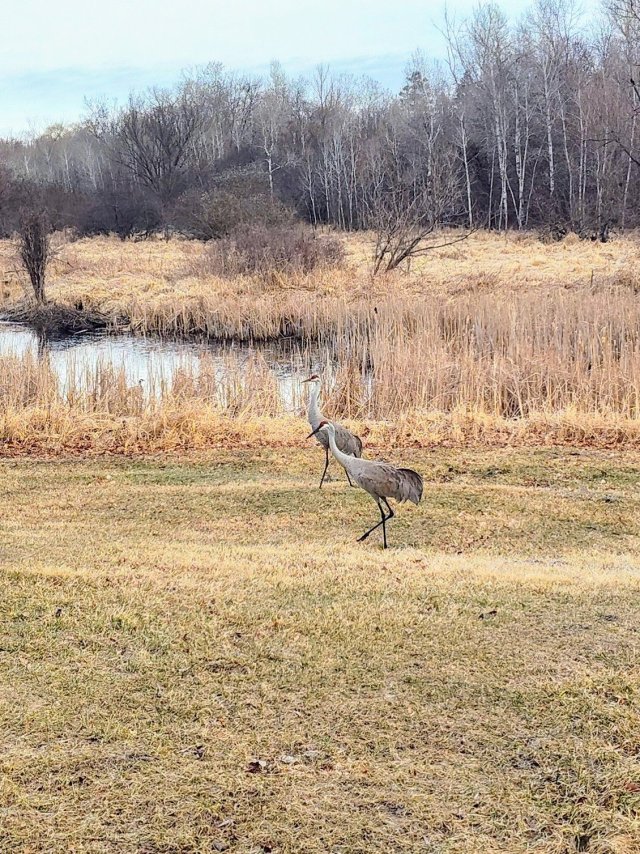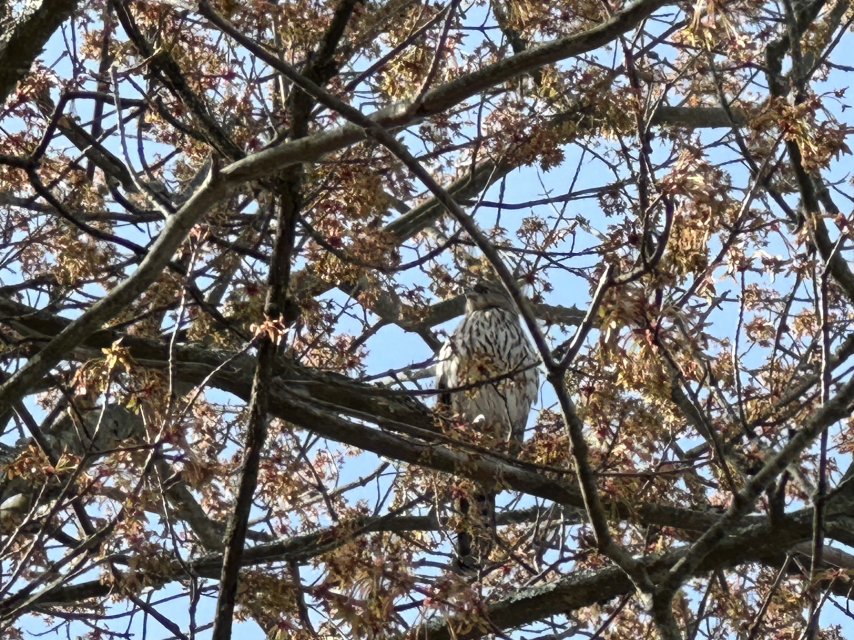The feeders this winter were heavily used by Blue Jays, Chickadees, Nuthatches, Woodpeckers, Grouse...and almost nothing else. It was a very poor year for winter finches and other birds we expect to host throughout the cold season...but the numbers of individual birds of the above species was very high; we have had over 15 Jays at a time on many occasions, and similarly high numbers of Grouse and we went through a crapload of seed. My wife, who would probably count each individual seed if there were a convenient way to do so, informs me that I have just opened my 12th 20kg bag of black oil sunflower seeds for the winter feeding season, which she starts counting on Nov1 each winter. That's well over 500lb of sunflower this season.
Well, that consumption is likely to go up for the next 6-8 weeks. Redpolls, which are normally at the feeder all winter long, were absent this winter until about 2 weeks ago. Then we saw one...then a few...and for the past week or so we have had dozens at a time all throughout the day. As I type this there are at least 100 all around the house. We have feeders on three sides of the building, so it's difficult to count precisely, but they are clustered on each feeder and all over the trees and shrubs, as well as picking up seed on the ground.
Today they were joined by small numbers of Juncos, Purple Finches, Pine Siskins and Am.Goldfinches. These species will swell in numbers as migration gets serious, and will be joined by several other species of sparrows and finches in coming weeks. The Siskins and Goldfinches in particular will likely be here in numbers rivalling those of the Redpolls, which will have largely moved on by that time.
We've also gone through more than 45lb of deer fat, which is a favourite of the Woodpeckers (3 species all winter), Nutchatches, Chickadees and Blue Jays.
The consumption of both of these foods...sunflower seeds and deer fat...has hit a record high for us this winter.
